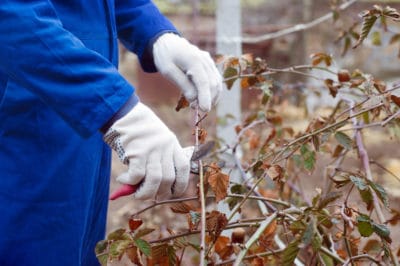Pruning Blackberry Bushes by Cane Type
To know the best time to prune blackberries, you first have to understand the differences between their canes:
Primocanes and Floricanes
As perennials in USDA hardiness zones 4 through 9, blackberry bushes live many years. Their individual canes, however, live just two. Called primocanes in their first year, they spend their days manufacturing and storing the energy necessary for flowering and fruiting in their second.
Primocanes that make it through the winter graduate to become floricanes. They bloom in spring, fruit between early and mid-summer and die. Nearly all blackberry cultivars fruit only on their floricanes.
But a handful, including ‘Prime-Ark 45’ and ‘Prime-Ark Freedom,’ do things differently. In fall, flowers bloom and berries ripen at their primocanes’ tips. Given the chance, the same canes bloom and fruit lower down the following summer. Because of this encore performance, these cultivars are known as “everbearing.”
When and How to Prune the Different Canes
- Prune non-bearing primocanes in early to mid-summer. Select from four to eight of the strongest, healthiest ones on each bush and cut them back to 4 feet above the soil. Side shoots (laterals) will sprout where you make the cuts. Cut the weaker primocanes back to the ground.
- After the bushes go dormant in fall, prune each side shoot back to 16 to 18 inches. Be sure to leave at least six buds on each.
- Prune floricanes after they’re done fruiting. Usually, you’ll finish picking them in mid- to late summer. Cut all of them back to the soil.
- Prune everbearing blackberry canes back to the ground after your first fall frost. Waiting until then allows the food stored in their leaves to move down into the crowns. Unless the canes are diseased, the delay results in more vigorous spring growth.
Of course, caring for your blackberries also requires prompt pruning of damaged or diseased canes and leaves.
Pruning Equipment
A well-sharpened pair of pruning shears handles most blackberry canes. To protect against thorns, wear sturdy, forearm-length gloves, fheavy long pants and a long-sleeved shirt or jacket. Protective eyewear may also be advisable, depending on the height of your blackberry bushes.
When pruning diseased canes or leaves, disinfect your tools in rubbing alcohol between cuts and after finishing.
